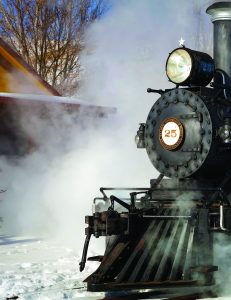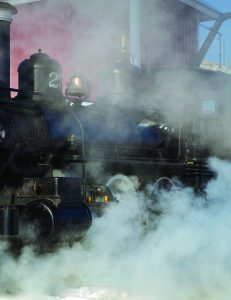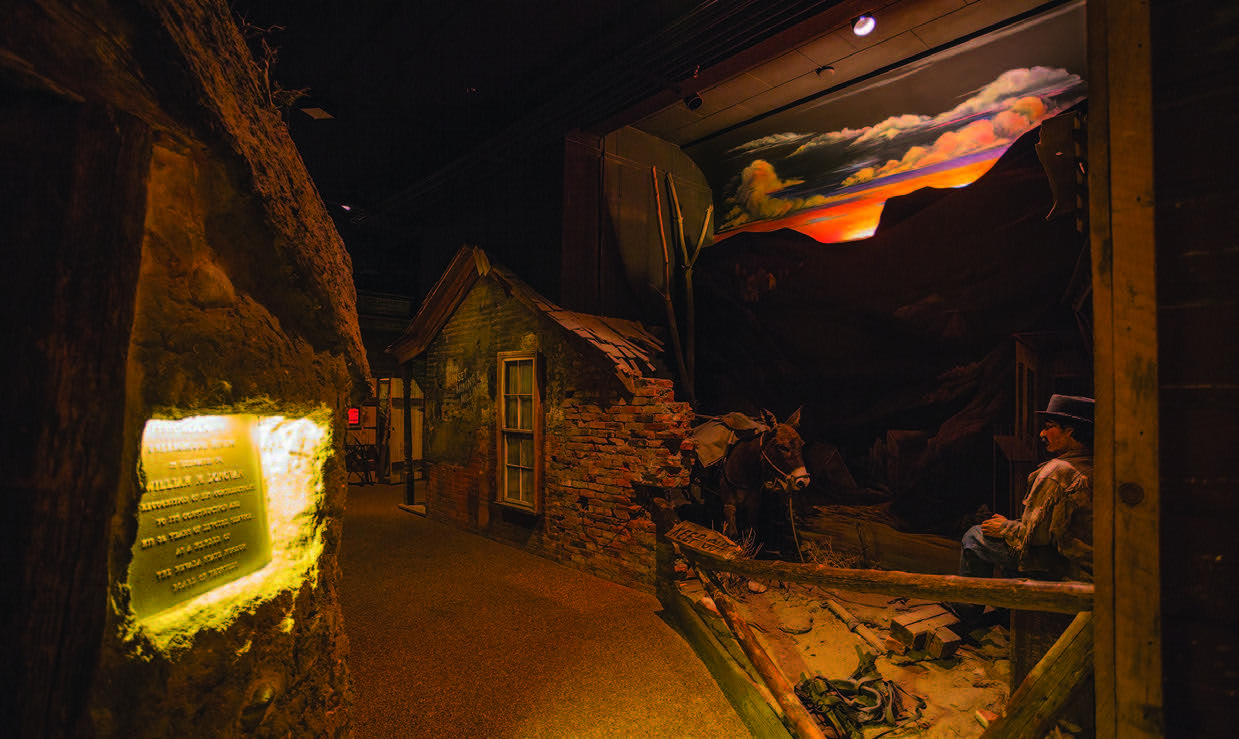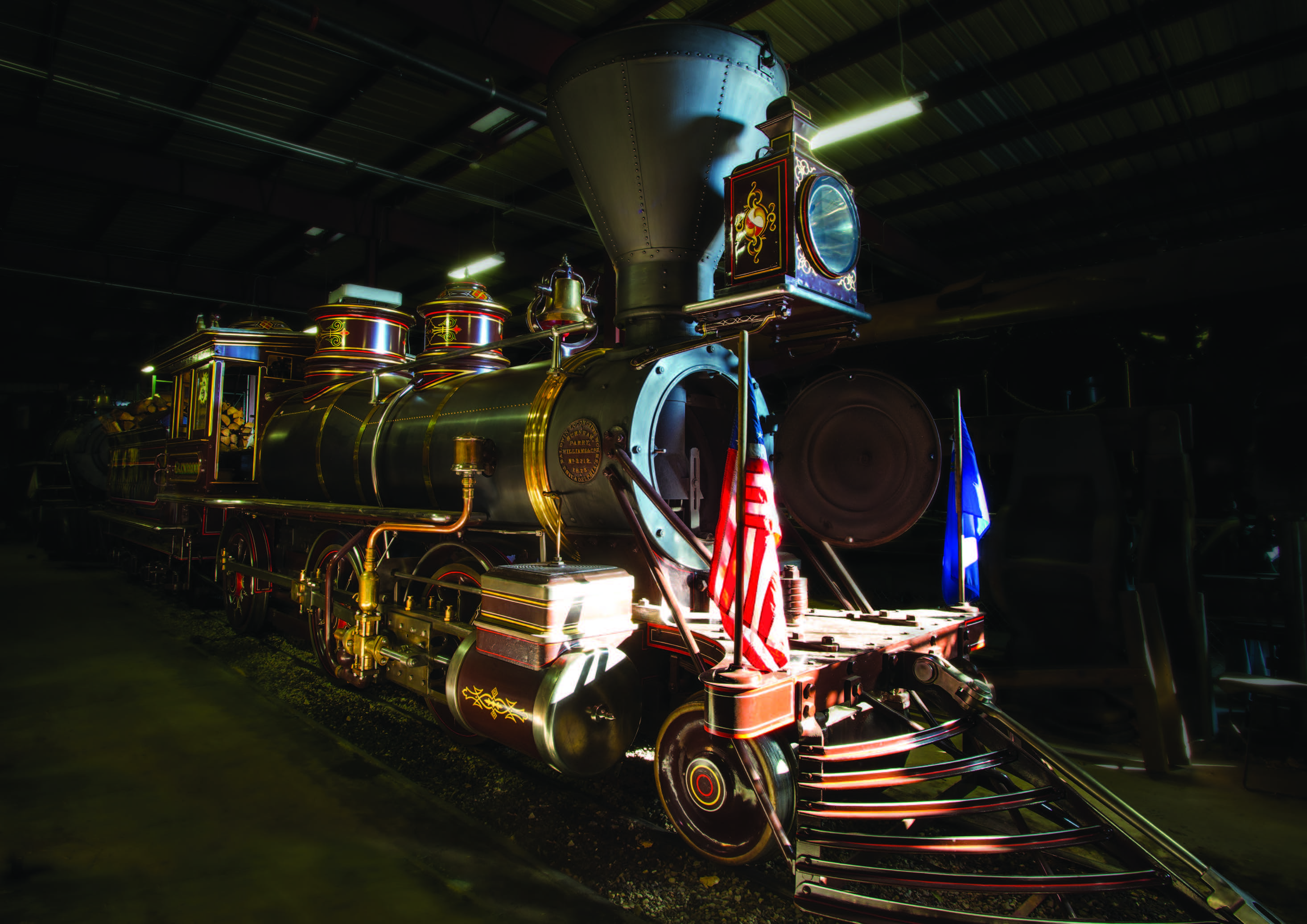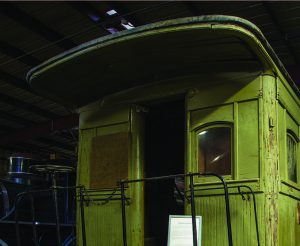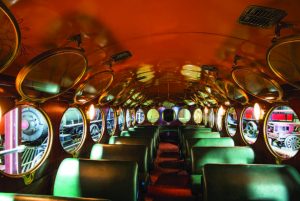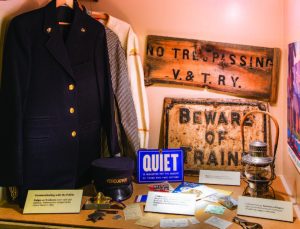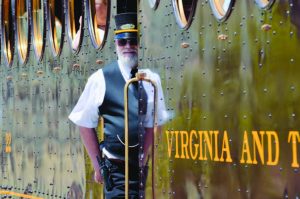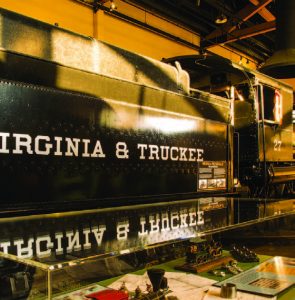Carson City State Museums
November – December 2016
Tucked into the capital, two distinct venues bring history to life.
BY GUY CLIFTON
At its best, history tickles our senses.
To see history up close—to touch it, to smell it, to hear it, to stand in the footsteps of those who made it—is what ties generations together. It can spark wonder in the young and memories in the old.
In Nevada’s capital city history has a heartbeat.
Both the Nevada State Museum and the Nevada State Railroad Museum, Carson City, exist to preserve, protect and promote the history of the Silver State in intimate fashion.
It is one thing to read about the millions in silver coins produced by the U.S. Mint in Carson City or the trains that hauled Tahoe Basin lumber bound for the mines of the Comstock Lode. It’s quite another to experience them up close.
NEVADA STATE MUSEUM
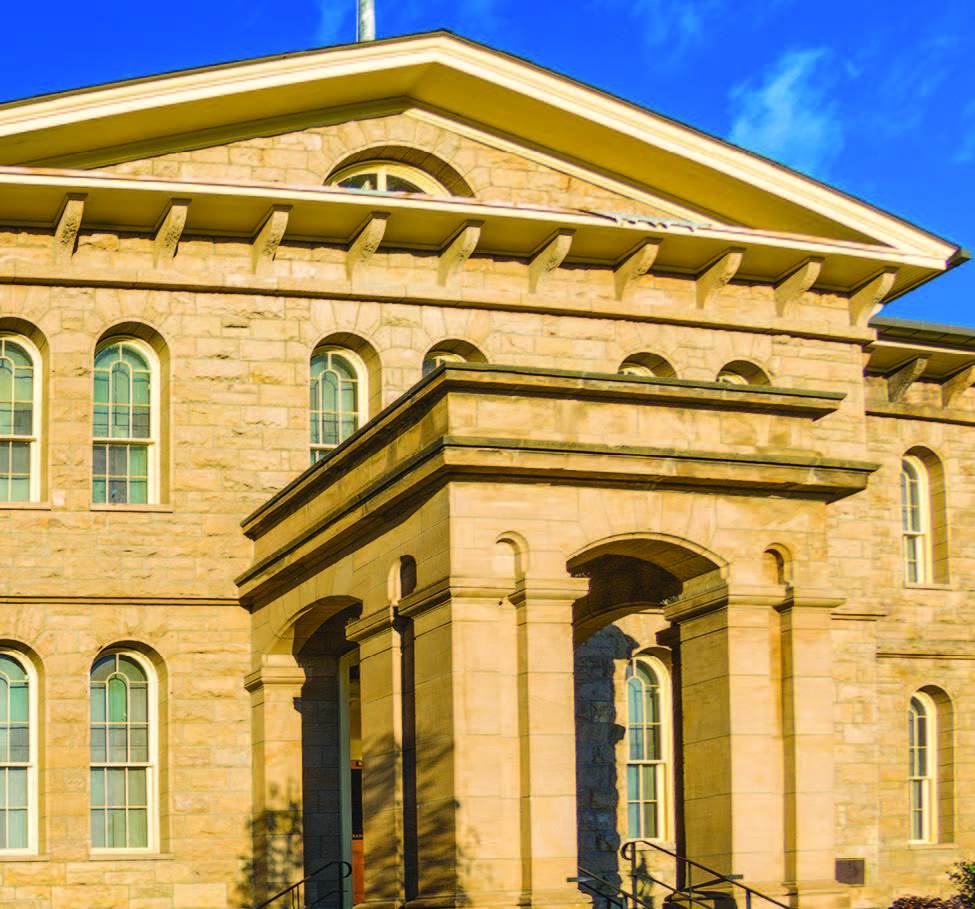
On his usual morning walk in the summer of 1938, District Judge Clark J. Guild noticed a for sale sign on the old U.S. Mint building on Carson Street. Long closed as a mint (it operated off and on from 1863 to 1893), the building had fallen into disrepair with a leaky roof and debris scattered from the removal of its equipment. But Guild saw something else.
“It would make a fine museum and we haven’t got one in Nevada,” Guild told his friend George Sanford, a prominent attorney in the state.
Guild’s foresight led to the state purchasing the building for $6,000 and on Admission Day in 1941 the Nevada State Museum opened its doors to the public. Seventy-five years later, it is one of the state’s cultural treasures, having enlightened, entertained, and educated generations of Nevadans and visitors.
“We’ll have people come in with their kids and I overhear them say, ‘My parents brought me here,'” says Bob Nylen, the museum’s curator of history who has been with the institution for 32 years.
Bob says the Mint building is the crown jewel of the museum. The venerable structure predates Nevada’s statehood, thrived in its early years of the silver rush, and has persevered through some tough times. As the museum’s collection of artifacts has expanded, so too has its footprint on Carson Street, but the Mint building remains the center of it.
“It’s where it all started,” Bob says. “That Judge Guild walked by and saw the for sale sign, it all started right then.”
The history of the U.S. Mint and that of the Nevada State Museum are forever linked and celebrated. Coin press No. 1, which struck many of the famed “CC” marked gold and silver coins, was returned to the building in 1958 and maintained in working order.
“There might be only one or two of this vintage still around and it’s the only one that is still operational,” Bob says. “It’s done a lot of great projects over the years.”
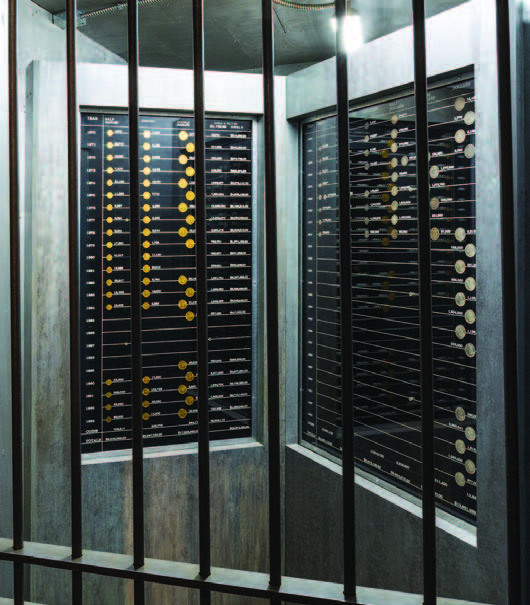 The coin press has been used to strike numerous medallions including a set of four different designs commemorating the state’s 150th birthday in 2014.
The coin press has been used to strike numerous medallions including a set of four different designs commemorating the state’s 150th birthday in 2014.
In a vault adjacent to the coin press is a collection of 109 of the 111 types of coins minted with the “CC” mark during the operational days of the U.S. Mint. The effort to complete the collection has been ongoing since the museum’s opening in 1941.
The only coins missing are the 1873 dime with arrows and the 1873 quarter without arrows.
“They are known to exist (in private collections) and the dime at least has come up for sale once or twice,” Bob says. “So we’re hopeful we can complete the collection one day.”
The museum’s mining display—often referred to as “The Tunnel” by returning visitors—is one of the most talked-about and visited parts of the museum. Dedicated in 1950, it was designed to give visitors an up-close look at an underground mining operation.
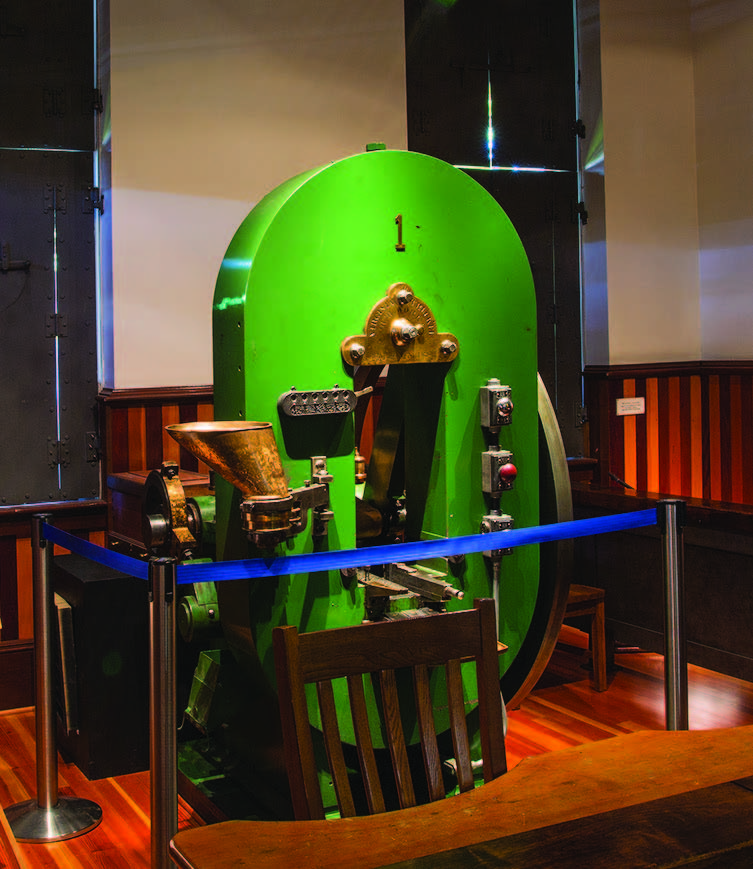
The earth-sciences display on the second floor of the mint building includes the world’s largest exhibited Columbian mammoth, discovered and excavated from the Black Rock Desert of northern Washoe County.
The state’s Native American culture is celebrated in numerous artifacts, including baskets by the famed basket weaver Louisa Keyser (1829-1925), better known by her Washoe Indian name of Datsolalee. Her baskets became prized collector items during the arts and crafts movement of the early 20th century. In 1945, the State of Nevada purchased 20 Datsolalee baskets, 10 for the state museum and 10 for the Nevada Historical Society in Reno. More have been added to the museum’s collection through the years.
The Nevada State Museum has also become home to the largest collection of artifacts and memorabilia from Nevada’s namesake battleship, the USS Nevada (BB-36). Prized among the collection is the silver service, created from 5,000 ounces of silver mined in Tonopah and highlighted with gold from nearby Goldfield. The ship’s wheel, bell, flag, and other artifacts are also part of the exhibit.
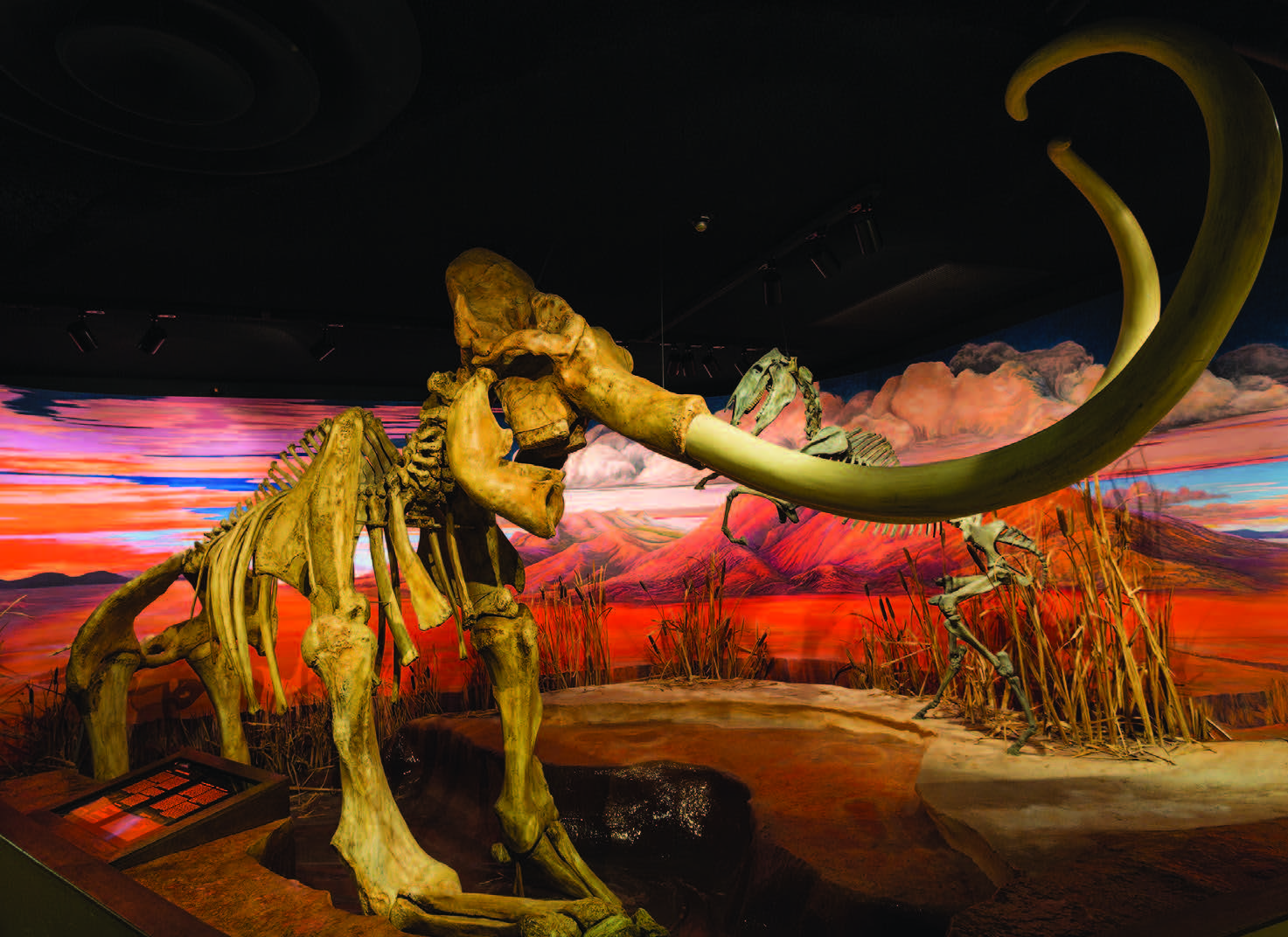
Numerous other artifacts and exhibits can be found throughout the museum that add to the state’s rich and unique history.
NEVADA STATE RAILROAD MUSEUM
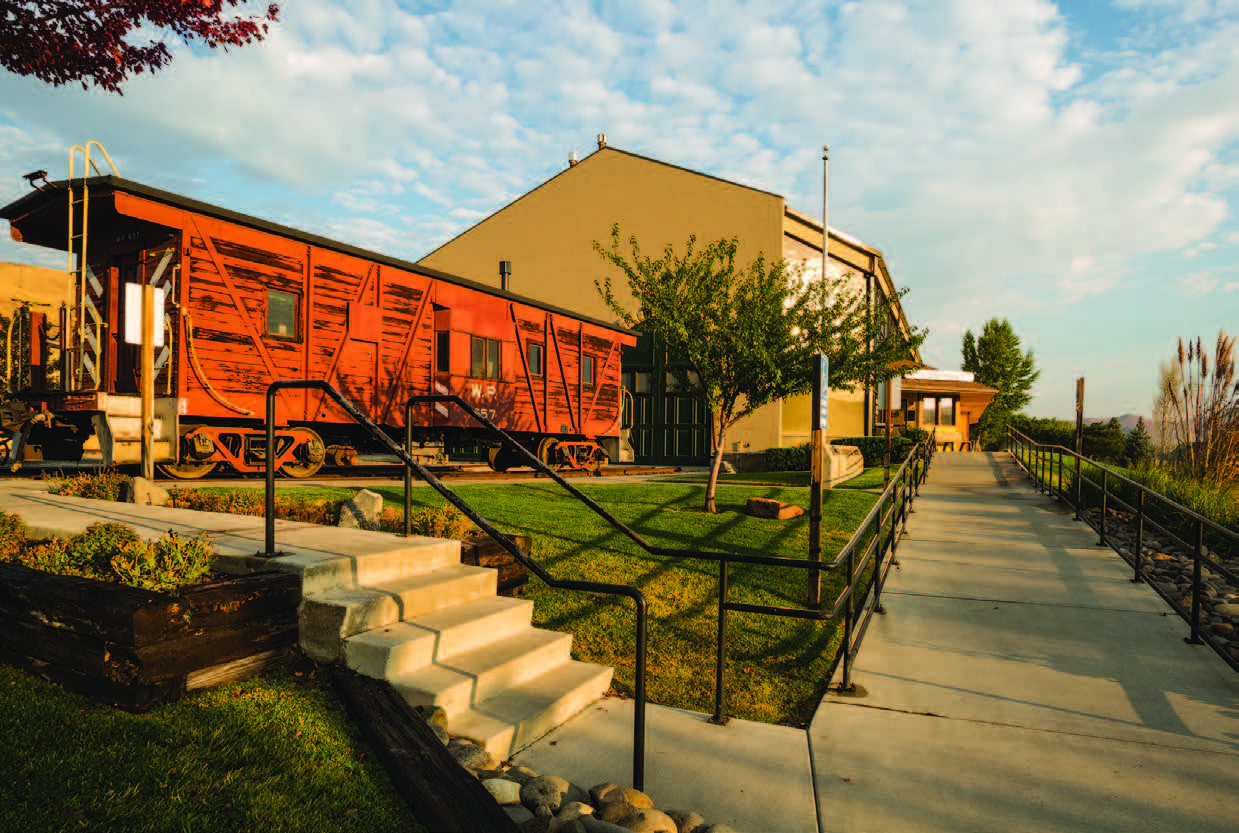 Those cold, crisp mornings of late fall, winter, and spring are especially poignant at the Nevada State Railroad Museum as the steam locomotive, which has become a favorite of the young and young at heart, fires up and hisses white clouds skyward.
Those cold, crisp mornings of late fall, winter, and spring are especially poignant at the Nevada State Railroad Museum as the steam locomotive, which has become a favorite of the young and young at heart, fires up and hisses white clouds skyward.
“The steam locomotive is a tremendous draw for us,” says Museum Director Dan Theilen. “The kids are drawn to it naturally, but also the adults.”
Dan, who took over as the museum’s director in July, had previously worked as its curator of education for many years. He said the collection at the railroad museum offers not only a reflection of railroad history, but of Nevada history as well.
“From mining and freight to connecting the coasts, Nevada’s railroads are at the heart of the state’s story,” Dan says.
The museum is home to several famous steam locomotives including two from 1875—the standard-gauge Inyo, and narrow-gauge Glenbrook, which Dan says might be the jewel of the collection.
Owned by the Bliss family, the Glenbrook was used to haul lumber on Lake Tahoe’s east shore to Spooner Summit from 1875 to 1898 and then used to transport passengers between Truckee and Tahoe City from 1898 to 1925. After the Nevada State Museum opened, the Bliss family donated it to the museum, the first and largest railroad artifact in the collection at the time.
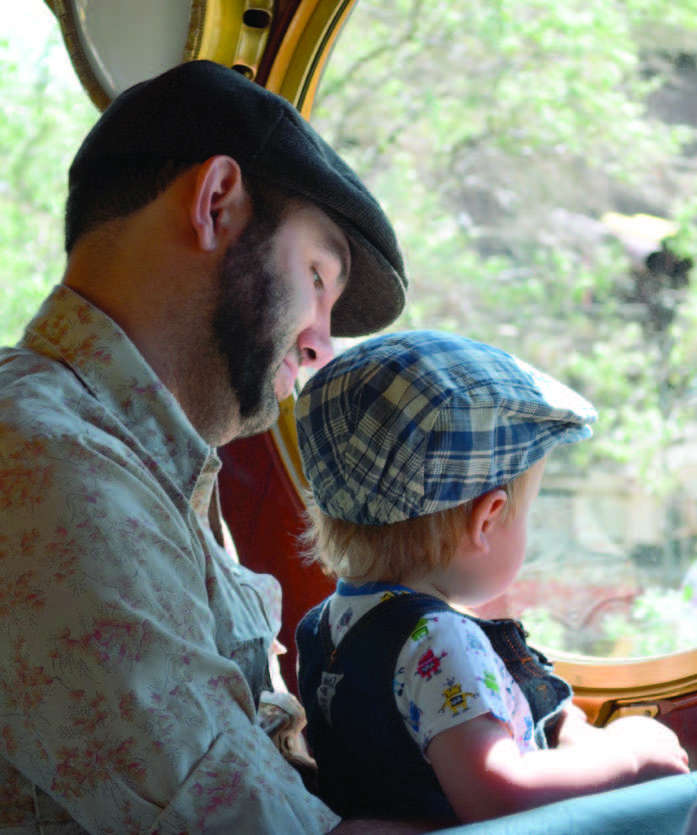 From 1943 to 1982, the Glenbrook sat outside the Nevada State Museum and generations of children were allowed to hop on board. It went to the railroad museum in 1982 and the restoration process to return it to working order took more than 30 years.
From 1943 to 1982, the Glenbrook sat outside the Nevada State Museum and generations of children were allowed to hop on board. It went to the railroad museum in 1982 and the restoration process to return it to working order took more than 30 years.
“It’s been beautifully restored,” Dan says. “A lot of our visitors who come here now, it’s the first thing they want to see.”
The Glenbrook along with the Inyo give the Nevada State Railroad Museum something no other such museum in the country possesses—working narrow and standard gauge steam locomotives in the same collection.
“In the rail preservation world, it doesn’t get any better than this,” says Peter Barton, administrator of the Nevada Division of Museums and History.
Another one-of-a-kind artifact at the railroad museum is V&T No. 17, the private coach of railroading giant Charlie Crocker. Built in 1868, it’s the oldest, and perhaps most historic, car in the museum’s collection. It is believed to be the car that carried Leland Stanford and his party with the Golden Spike—the ceremonial final spike—to the completion of the Transcontinental Railroad at Promontory, Utah, on May 10, 1869.
For railroad researchers, the Nevada State Railroad Museum has what Dan calls, “a very robust” collection of artifacts, photos, and documents related to the Virginia & Truckee Railroad.

